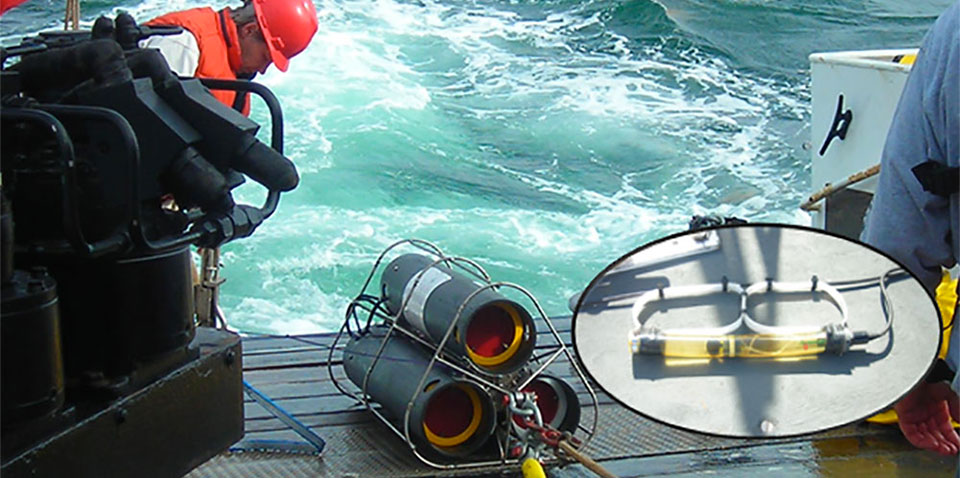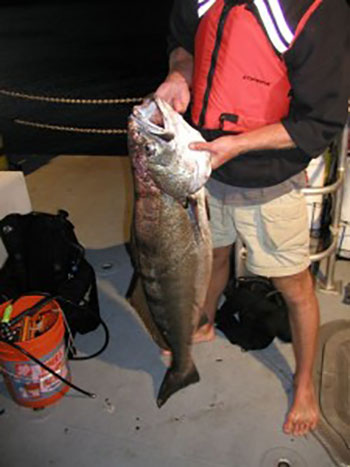Noise
Monterey Bay

Why is it a concern?
A number of studies document impacts to living marine resources, including behavioral changes and physical effects due to exposure to anthropogenic noise and pressure waves in the marine environment. Anthropogenic sources of noise include large commercial shipping traffic such as container ships, freighters, barges and tankers, recreational and commercial boats, military low frequency testing, research activities and aerial overflights.
Marine mammals have been observed to deviate from their migration paths to avoid noise, or interrupt their communications in response to elevated noise levels. Certain anthropogenic noise is thought to mask sounds used for mating, feeding and avoiding predators. Responses vary depending on the acoustic frequency, decibel level, proximity to the source and other species-specific sensitivity factors. Concern about the cumulative impacts of noise from a variety of sources has grown as the ocean has become noisier in past half-century. However, long-term cumulative impacts are uncertain and range from minimal impacts in some situations to behavioral alterations to possible physiological or physical damage to hearing, to stranding events.
Eavesdropping on the Deep
The Monterey Bay Aquarium Research Institute has been studying the underwater sounds of Monterey Bay for the last 3 years. In 2015, an underwater hydrophone was placed 18 miles offshore, just west of Monterey Bay at a depth of 3,000 feet. Not only has the hydrophone been able to pick up sound generated on the surface, but has been able to pick up the low-pitched sounds of ship engines at distances over 10 miles and whale calls over 100 miles away. Today, everyone can hear these sounds through a live-stream, 24 hours a day, 7 days a week.
Overview of Research
| Project Name | PI and contacts | Links |
|---|---|---|
MARS: Passive Acoustic Monitoring |
John Ryan, George Matsumoto |
http://sanctuarysimon.org/projects/project_info.php?projectID=100442&site=true |

Science Needs and Questions
- What are the ambient noise levels in the sanctuary arising from both anthropogenic and natural sources and how are whales in the sanctuary affected by increased anthropogenic noise?
- What are the spatial and temporal patterns of noise produced by vessels within the sanctuary?
- What are the relative inputs of sound from various sources to the sanctuary’s total “ocean noise budgets,” and how do they vary at temporal and spatial scales?
Education and Outreach Material
Search On: Daniel and the Sea of Sound
Podcast on Noise and Soundscapes in SBNMS with Dr. Leila Hatch
Discovery of Sound in the Sea offers many resources related to the issue of noise in the ocean.
References
Clark, Christopher W., et al. "Acoustic masking in marine ecosystems: intuitions, analysis, and implication." Marine Ecology Progress Series 395 (2009): 201-222.
Ellison, W. T., et al. "A New Context‐Based Approach to Assess Marine Mammal Behavioral Responses to Anthropogenic Sounds." Conservation Biology 26.1 (2012): 21-28.
Hildebrand, John A. "Anthropogenic and natural sources of ambient noise in the ocean." Marine Ecology Progress Series 395.5 (2009).
McDonald, Mark A., John A. Hildebrand, and Sean M. Wiggins. "Increases in deep ocean ambient noise in the Northeast Pacific west of San Nicolas Island, California." The Journal of the Acoustical Society of America 120.2 (2006): 711-718.
McKenna, Megan F., et al. "Underwater radiated noise from modern commercial ships." The Journal of the Acoustical Society of America 131.1 (2012): 92-103.
Weilgart, Lindy S. "The impacts of anthropogenic ocean noise on cetaceans and implications for management." Canadian Journal of Zoology 85.11 (2007): 1091-1116.

